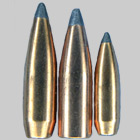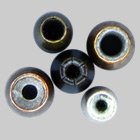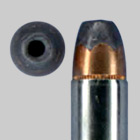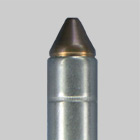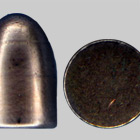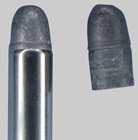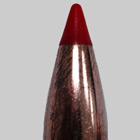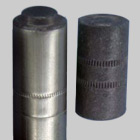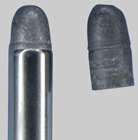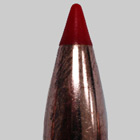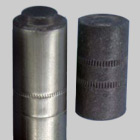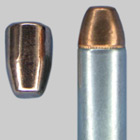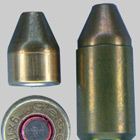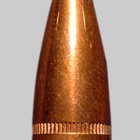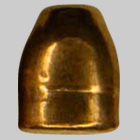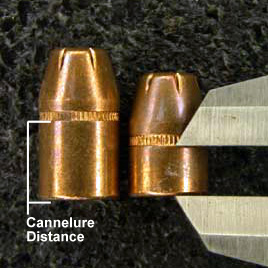Home | Glossary | Resources | Help | Contact Us | Course Map
Aviso de archivo
Esta es una página de archivo que ya no se actualiza. Puede contener información desactualizada y es posible que los enlaces ya no funcionen como se pretendía originalmente.
Nose Construction
Nose construction describes the many variations encountered on all types of ammunition, for example:
- Soft point bullets provide for exposure of a portion of the core at the nose of a jacketed bullet .
- Jacketed hollow point bullets have a cavity in the nose to facilitate expansion.
- Semijacketed hollow point bullets have an exposed portion of the lead nose that contains a cavity.
- Metal point bullets ( capped bullets) consist of a standard lead bullet with a harder metal jacket over the nose to enhance bullet penetration.
- Solid nose constructed of a single metal or alloy.
Open point bullets (soft point, hollow point, and semijacketed bullets) offer opportunities to identity the manufacturer or source based on the construction of nose cavities. The details of the interface between jacket, core, and cavity are often proprietary in nature and readily observable.
| Nose Cavity Details of Open Point Bullets |
|
| Details | Type |
|
Serrations in the nose portion of the bullet jacket. |
Silver tip |
|
Petals of jacket material folded into the cavity to help retain the core within the jacket even after impact with a target. |
Hollow point |
|
Center-post design |
Hydra-Shok |
Nose Shape
Bullet nose geometry generally includes the following configurations:
- Round nose bullets are elongated with a nose measuring half that of the bullet diameter (half of the bullet diameter).
- Pointed types.
- Spitzer bullets have a sharp point and a long ogive.
- Conical bullets/conoidal bullets have a cone shape.
- Wadcutter bullets have a sharp shouldered nose intended to cut target paper cleanly to facilitate accurate scoring.
- Flat nosed bullets have a flattened tip at right angles to its axis.
- Semiwadcutter bullets have a distinct short truncated cone at the nose end.
- Truncated bullets are conical with a flat nose.
Cannelures
Type
As previously mentioned, there are two types of circumferential grooves:
- Knurled
- Smooth
Cannelures may or may not serve a functional purpose on a given bullet. They are very useful in determining the manufacturer and, in some cases, the stock number of bullets that are used only for specific purposes.
Number
It is useful to document the number of cannelures found on each type of bullet; this further limits the number of candidates when searching for similar examples in reference resources (primarily in a laboratory Standard Ammunition File [SAF]).
Location
The location of each cannelure in terms of its height above the base of a bullet is another physical feature or set of physical features used as an additional filter to limit the field in searching reference files.
Additional Online Courses
- What Every First Responding Officer Should Know About DNA Evidence
- Collecting DNA Evidence at Property Crime Scenes
- DNA – A Prosecutor’s Practice Notebook
- Crime Scene and DNA Basics
- Laboratory Safety Programs
- DNA Amplification
- Population Genetics and Statistics
- Non-STR DNA Markers: SNPs, Y-STRs, LCN and mtDNA
- Firearms Examiner Training
- Forensic DNA Education for Law Enforcement Decisionmakers
- What Every Investigator and Evidence Technician Should Know About DNA Evidence
- Principles of Forensic DNA for Officers of the Court
- Law 101: Legal Guide for the Forensic Expert
- Laboratory Orientation and Testing of Body Fluids and Tissues
- DNA Extraction and Quantitation
- STR Data Analysis and Interpretation
- Communication Skills, Report Writing, and Courtroom Testimony
- Español for Law Enforcement
- Amplified DNA Product Separation for Forensic Analysts


